The Italian Larder
Search by alphabet:
A B C D E F G H I J K L M N O P R S T U V W Y Z
Tajarin– See Pasta: Fresh Pasta
Tanuta – See Fish: Sea bream, black
Tartufo bianco– See Truffle: white
Tartufo nero – See Truffle: black
Thyme (Timo) (Thymus vulgaris)
Thyme is a herb which has small intensely perfumed leaves. There are 20 different varieties one of which has a lemon flavour (lemon thyme – timo-limone). The most common variety is Hiemalis which has larger leaves and a strong flavour. Thyme grows wild along coastal areas in Italy, although cultivated thyme allows for thyme to be harvested all year-round.
Buy: Thyme is sold both fresh (preferable) and dry. For fresh thyme, look for fresh, green leaves which are free from rot, mould, yellowing, or browning.
Store: Store the leaves wrapped in plastic in the drawer of the refrigerator for 3 to 5 days. Dried thyme should be stored in a cool, dark, dry place.
Prepare: Rinse the thyme under cold water and dry. Pinch the tip of the thyme and slide your fingers along the branch to remove the leaves.
Eat: Dried thyme can be used in stews, roasts, grilled fish and meat. Fresh thyme can be used in salads, sauces, soups, and stuffings and used in bunches of mixed herbs to flavour dishes. It pairs well with fish, lamb, pork, chicken, rabbit, veal, mushrooms, aubergine, courgettes, peppers, wine, tomato, broad beans and beans. Thyme is also used to flavour cheese and salami.
Tomato (Pomodoro) (Lycopersicum esculentum)
Equivalents: 4 medium raw tomatoes = 450 grams = 1 cup chopped tomatoes = 4 servings
4 medium cooked tomatoes = 450 grams = 3 servings
Tomatoes are technically considered a fruit but are used like a vegetable. Tomatoes can be round, pear-shaped, tear-shaped, or oval, have smooth skin, meaty flesh, and although they can range in colour from green, purple, yellow, to black, are typically red. The Italian word for tomato “pomodoro” means “golden apple” (pomme d’oro) suggesting the first tomatoes in Italy may have been yellow. They are in season during the summer. As one of the iconic ingredients of the Italian kitchen today, it seems difficult to believe Italians only started cooking with it in the 19th century. The use of the tomato becomes more prevalent the further south one goes in Italy. Tomatoes have vitamins A and C.
Buy: Tomatoes are sold fresh, dried, concentrated, or tinned. Fresh tomatoes should be used in season, if good ones can be obtained. The best tomatoes are grown at home, harvested when ripe and used fresh. This is not possible for many people so in shops, look for fresh tomatoes with a mature, ripe perfume which are unblemished. They should be evenly firm, vividly coloured, and glossy. They should not be hard or have any dark spots, wrinkles, wilting, or soft spots. Misshaped tomatoes are perfectly fine to eat and are often better than uniformly shaped tomatoes. Green-streaked, firm tomatoes are preferred for eating raw while evenly red tomatoes are better for cooking. Preferably the tomatoes won’t have been refrigerated as they become mealy and tasteless inside. Tomatoes purchased between November to May from the northern hemisphere will have likely been picked green and refrigerated and are not worth buying. If fresh tomatoes are out of season or not of good quality, tinned tomatoes can be used instead (except where the tomato is meant to be used raw or cooked whole). Dried tomatoes are only used when specified and are not interchangeable with fresh tomatoes.
Varieties:
Dried:
Sun-dried tomatoes (Pomodoro secco) are produced in Liguria and southern Italy. Sun-dried tomatoes are cut in half and left to dry under the sun. They can then be washed in vinegar and preserved in oil and/or flavoured with chilli or herbs. They have an intense flavour and a chewy, leathery texture. They are eaten as a starter or in sauces in Calabria and Puglia.
Cherry tomatoes (Pomodoro da Serbo / Pomodorini / Pomodori da brodo) are small, red or yellow, round, oval, or pear-shaped tomatoes which typically grow in bunches. In South-central Italy, they are left to hang in the fresh air in the winter to partially dry out and concentrate their flavour. Notable varieties include Principe Borghese, di Prato, Piros, and Grappoli d’inverno. These are used in sauces and to flavour broths.
Fresh:
Cherry tomatoes / Pear tomatoes (Pomodorino a ciliegia) are small tomatoes sold in bunches, each weighing less than 30 grams. The most famous variety is the Pachino tomato (pomodoro di Pachino PGI) from Sicilia which has two grooves on the sides and pointed bottom. It has thick skin and firm flesh. The pendulum tomatoes (pomodorino al piennolo / piennoli) are another variety. These can be eaten raw in salads, made into sauces or dried.
Salad tomatoes (Pomodoro da mensa / Insalatari) are good for eating raw. The most common variety is the beefsteak tomato (cuore di bue / bovaiolo) which is heart-shaped. Other varieties include Tondo liscio, Palla di fuoco, Meraviglia del mercato, Marmande, Supermande, Royal Ace, Costoluto Genovese, and Costoluto di Parma. Select tomatoes with some streaks of green and thin skins.
Plum tomatoes / Roma tomatoes / Cooking tomatoes (Pomodoro da salsa / Pomodori da pelati) are oval, elongated bright red tomatoes ranging in length from 7 to 10 cm which are good for making sauce. The best variety is the San Marzano but other varieties include Ventura, Roma, Lampadina, Vesuvio, and Napoli. They have thick, compact flesh with little juice.
Tinned tomato / Canned tomato (Pomodoro di conserva):
The best tomatoes for tinning are the San Marzano plum tomatoes (pomodoro sanmarzano dell’Agro sarnesenocerino / seccagni) – this will be clearly designated on the label. San Marzano tomatoes have lots of flavour, meaty flesh and fewer seeds. Italians use these tinned tomatoes (or passata – tomatoes they have preserved at home by milling tomatoes and then boiling and bottling them) during the winter.
Types:
Passata are peeled, deseeded, and strained tomatoes
Polpa / Pomodori tagliati a pezzi are peeled, deseeded and chopped tomatoes
Pomodori pelati are peeled and whole tomatoes
Tomato paste (Concentrato di pomodoro)
Regional names: strattù
Tomato paste is made by drying Petomech or Tondino tomatoes, pureeing them, drying them again until the liquid evaporates and blending them with oil. It is reddish brown in colour and extremely richly flavoured. It is packaged in tubes, jars and tins. I prefer tubes as I use a small quantity at a time and it is easier to keep this way in the refrigerator.
Types:
Concentrato di pomodoro is a light variety and the most commonly found. It takes 300 grams of tomatoes to make 100 grams.
Doppio concentrato is of medium concentration using 500 grams of tomatoes to make 100 grams.
Triplo concentrato is the strongest and uses 600 grams of tomatoes to make 100 grams.
Store: Storage depends on the type of tomato / tomato product:
Dried tomatoes: Store sundried tomatoes sealed in a cool, dark, dry place. Cherry tomatoes can be left to dry should be hung in a cool, dry place where the air circulates.
Fresh tomatoes: Store fresh tomatoes at room temperature, not in the refrigerator as they become mealy. Tomatoes which are bright red are ready to eat. Those with a dull colour can be kept at room temperature for a day or two until they turn bright red. To speed up the ripening process, tomatoes can be placed in a paper bag with a ripe tomato until ready.
Tinned tomatoes and tomato paste: Tinned tomatoes and tomato paste should be kept in a cool place at room temperature. Once a tin is opened, the contents should not be stored in the tin. These products should be transferred to a plastic or glass container and sealed. The tomato paste can be covered with olive oil to seal it.
Prepare: The preparation depends on the type of tomato or tomato product and its intended use.
Sundried tomatoes are often soaked in water before cooking.
Fresh tomatoes to eat raw: Leave the tomatoes in the sunlight for an hour before preparing. Rinse tomatoes with cold water and cut out the stem. If you are making a dish requiring raw, sliced tomatoes, slice with a small serrated knife, salt and let the slices sit in a colander for an hour in order to lose their excess water. Never let fresh tomatoes sit in dressing as they will become soggy.
Cooking fresh tomatoes: To skin tomatoes, score an “X” lightly in the skin and put 2 to 3 at a time in a pot of boiling water until the skin starts to curl, about 30 seconds. Remove with a slotted spoon to a bowl of ice water. When the tomato is cool, use your fingers to easily peel the skin off and discard. To remove the seeds, cut the tomato into quarters, squeeze and use your fingers to dislodge the seeds or cut out with a knife. To see an illustrated step-by-step guide, see here. Once cut open, if the tomatoes appear to be watery or mealy, do not discard them, but rather roast them in the oven with a drizzle of olive oil in order to concentrate their flavour.
Tinned tomatoes: Drain the juice the tomatoes are preserved in. To remove the seeds of whole tomatoes, cut in half and squeeze out the seeds.
Tomato paste should be used sparingly and is often diluted with hot water or broth before adding to dishes.
Eat: Tomatoes can be used in almost every course- in starters, with pasta, in risotto, on pizza, on focaccia, with meat, but traditionally are not used in dessert (although I have had a panna cotta with tomato which was extraordinary). Fresh tomatoes are eaten raw in salads or stuffed (pomodori ripieni a crudo). Fresh tomatoes can be roasted (pomodori arrosto), grilled (pomodori alla griglia) or stuffed (pomodori ripieni al forno, pomodori col riso). Fresh and tinned tomatoes can be cooked in sauces (salsa di pomodoro, salsa di pomodoro alle verdure, sugo di pomodoro), gratineed (pomodori al gratin), in soup, in tarts (tortino di pomodori) or cooked with meat, fish, eggs, or vegetables. Sun-dried tomatoes can be served as they are with cured meats or conserved with other vegetables. Tomatoes pair well with basil, mozzarella cheese, olive oil, fish, meat, eggs, onion, shallot, celery, thyme, tarragon, lardo, pancetta, butter and most vegetables.
Trenette – See Pasta: Dried Pasta
Trooping funnel mushroom – See Mushroom: Funnel
Tonnetto alletterato – See Fish: Tuna
Triglia di fango– See Fish: Mullet, red/Mullet, striped
Triglia di scoglio – See Fish: Mullet, striped red
Trofie – See Pasta: Dried Pasta
Truffle (Tartufo nero, Tartufo bianco, Scorzone) (Tuber melanosorum, Tuber magnatum, Tuber aestivum, Tuber mesentericum, Tuber brumale, Tuber macrosporum, Tuber albidum / Tuber borchii)

White truffles
Truffles are a wild fungus which grow underground amongst the roots of certain trees. They range in dimension from the size of a walnut to the size of an apple or even larger. Connoisseurs go crazy for their completely unique aroma and flavour. Traditionally pigs were trained to find the truffles, but as they sometimes eat the truffles, they are increasing being replaced with dogs. Truffles have not been successfully cultivated so their price ranges from expensive to astronomical. They can be white or black. White truffles (Tuber magnatum pico) are much rarer as they only grow in Italy and Croatia. They can sell for EUR 3,100 per kilo wholesale. They are only eaten raw. The most famous of the festivals to celebrate the white truffle is in Alba, Piemonte, although there also are significant fairs in San Miniato, Toscana and Acqualagna, Marche. Black truffles (Tuber melanosporum) have a milder, slightly earthy flavour compared to white truffles, which is enhanced by cooking. There are also 28 varieties of black truffles but most are inferior to the Tuber melanosporum. Black truffles grow in Europe, North America, Africa, and China.
Buy: There are also many truffle-related products in the market: truffle paste, truffle oil, truffle butter and preserved whole truffles. All of these are inferior to the fresh truffle as they often have no flavour, although a drop of truffle oil could add flavour to a dish. Purchase fresh truffles which are firm and free from holes and black spots (pink spots on white truffles are okay). They should have a strong, pungent aroma which reflects their strength of flavour. Some dirt is fine but make sure that you are not paying truffle prices for clumps of soil attached to the truffle. Larger truffles are more desirable as there is less wastage than a smaller truffle, but they are also more expensive. Look for truffles which are more regular in shape, rather than knobbled with crevices.
Types:
White:
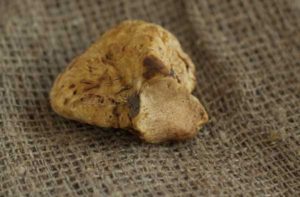
White truffle
White truffle (Tartufo bianco/Tartufo d’Alba/Trifola/Tartufo piemontesi) (Tuber magnatum pico) is brownish yellow in colour, sometimes with greenish hues. The inside is white or slightly yellow. When the truffle is not completely mature, it can sometimes be grey in colour with reddish spots and the inside will have whiter veins. It is found in Piemonte from October to December under oak, lime, poplar, and willow trees. There are immature white truffles which are sometimes on the market in September. They are also found in Toscana, Emilia-Romagna, Veneto, Molise, the Marche, Umbria, and in Croatia. It is typically about 2 to 15 cm in size although some huge white truffles have been discovered in the past.
Lesser varieties:
Bianchetti truffles / Spring bianchetto truffle (Bianchetto) (Tuber albidum / Tuber borchii) is a lesser white truffle without the intense perfume of the true white truffle. It ranges in size from the size of a pea to the size of a large plum and grows under pine trees. It has smooth skin which can be yellow, orange, or brown in colour.
Black:
Black truffle (Tartufo nero / Tartufo di Norcia / Tartufo di Périgord) (Tuber melanosporum) is the true black truffle. It has a bumpy skin which is blackish brown in colour with a purplish hue. The inside is a grey mixed with a purple, brown or reddish black hue. The veins start out white and turn reddish in colour when the truffle is mature. It is found under oak, poplar, and hazelnut trees in Umbria and Toscana, from October to March. It is also found in the Marche, Lombardia, Veneto, Lazio, Emilia-Romagna, Campania, France, and Spain.
Lesser varieties:
Autumn black truffle (Tartufo nero ordinario di Bagnoli) (Tuber mesentericum) is an inferior black truffle distinguishable by the small cavity at the base of the truffle.
Muscat black truffle / Black winter truffle / Brumale truffle (Tartufo nero invernale) (Tuber brumale) is an inferior black truffle although it also has a pleasant taste. It is irregular in form and has fewer veins which are bright white.
Smooth black truffle (Tartufo nero liscio) (Tuber macrosporum) is brownish red in colour with a bumpy skin and a pleasant, although more muted, flavour.
Summer black truffle / Scorzone black truffle (Scorzone) (Tuber aestivum) is an inferior black truffle with a muted flavour and aroma. It is also brownish black in colour but has much larger bumps on the skin and the interior is white in colour. It is found year-round except for in the spring.
Store: Truffles should be consumed as quickly as possible as their flavour and aroma deteriorates rapidly after being harvested. If they must be stored, first wrap in a 2 layers of lightly damp paper towel or butcher paper, then wrap in four more layers of paper, place in a sealed container and store in the warmest part of the refrigerator. Change the paper daily. Some people seal truffles together with unshelled eggs or risotto rice in the refrigerator for 3 days so that the truffles can perfume the rice or eggs. This method does not benefit the truffle however as it dries out. White truffles can be kept for up to 7 days and black truffles for up to 14 days after harvest. If in the unlikely event, excess truffle shavings need to be stored, they can be combined with room temperature butter and refrigerated. Truffle butter can be spread on bread or crackers.
Prepare: Truffles should be brushed with a dry, medium-firm brush (can use a toothbrush) and rubbed with a damp cloth to remove any sand or dirt. A box cutter or the tip of a paring knife can be used to cut away any rotten spots or insect infestations. Some people peel the black truffle and pound the peel and use it for stuffings. Black truffle can be pounded, grated, or thinly sliced before cooking. White truffles are thinly sliced with a truffle shaver before serving raw.
Eat: White truffles are always eaten raw and should never be cooked. They are served with relatively bland flavours to allow their flavour to shine through and are enhanced by being pared with fattier foods containing butter, eggs, or cheese. They are used in fondue (fonduta), bagna caôda, risotto (tartufo sul risotto), pasta (tajarin al tarfufo, tartufo su tagliolini), sandwiches, polenta, with raw beef (carpaccio) and with eggs (tartufo sull’uovo al burro). The only dish in which white truffle is cooked is tegamino alla lodigiana (white truffle layered with cheese and baked briefly). Black truffles are eaten cooked with pasta (fettucine col tartufo di Norcia, spaghetti alla Norcia), eggs (frittata di tartufi, uova strapazzatee con tartufo nero), polenta, potatoes, in salami and in cheeses. Scorzone is used in oils and in sauces. Truffles pair well with Parmigiano-Reggiano cheese, potatoes, butter, cream, fish, chicken, veal, pasta, rice and eggs.

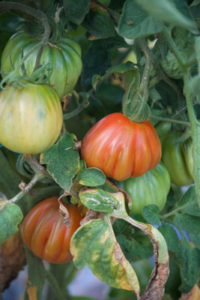








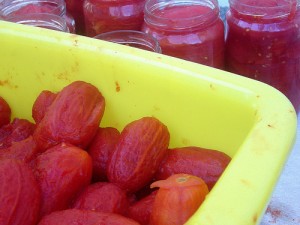






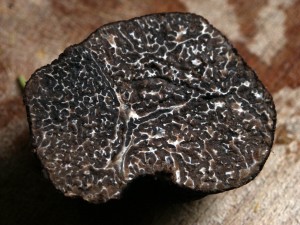





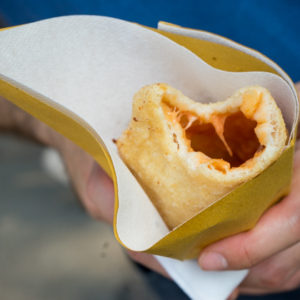

Leave a Reply